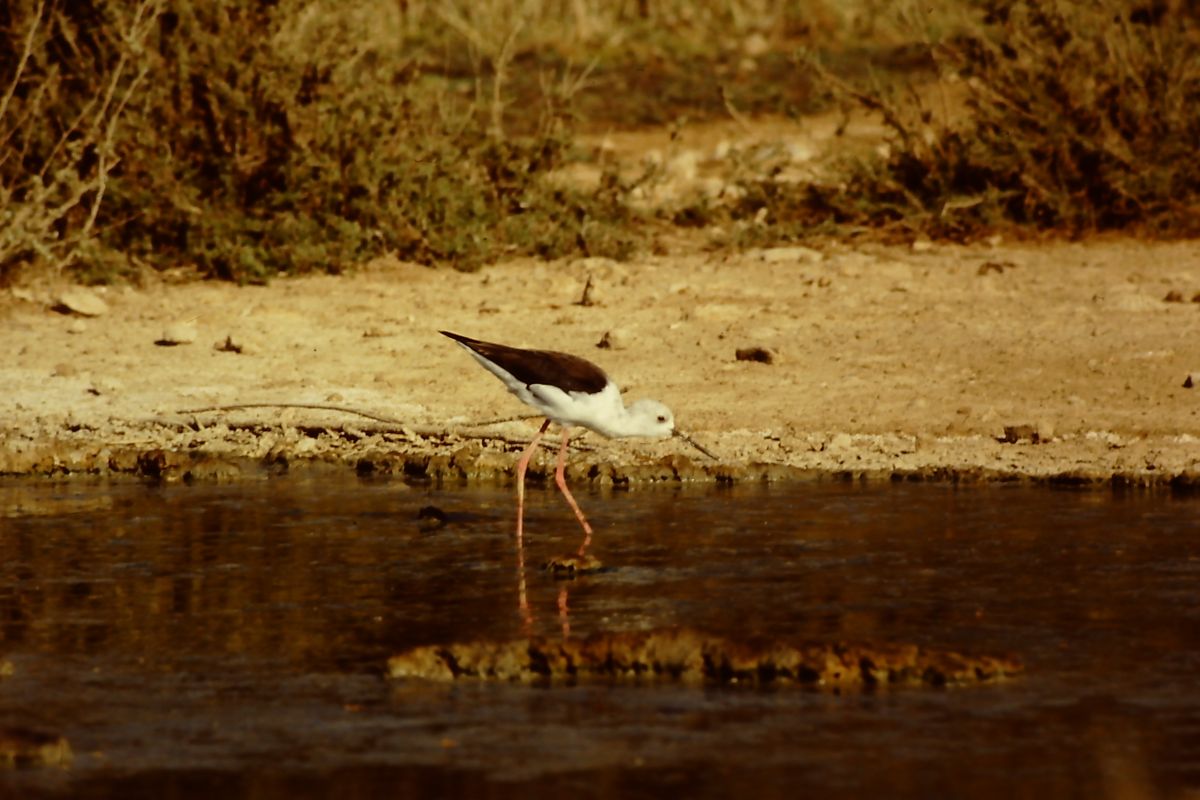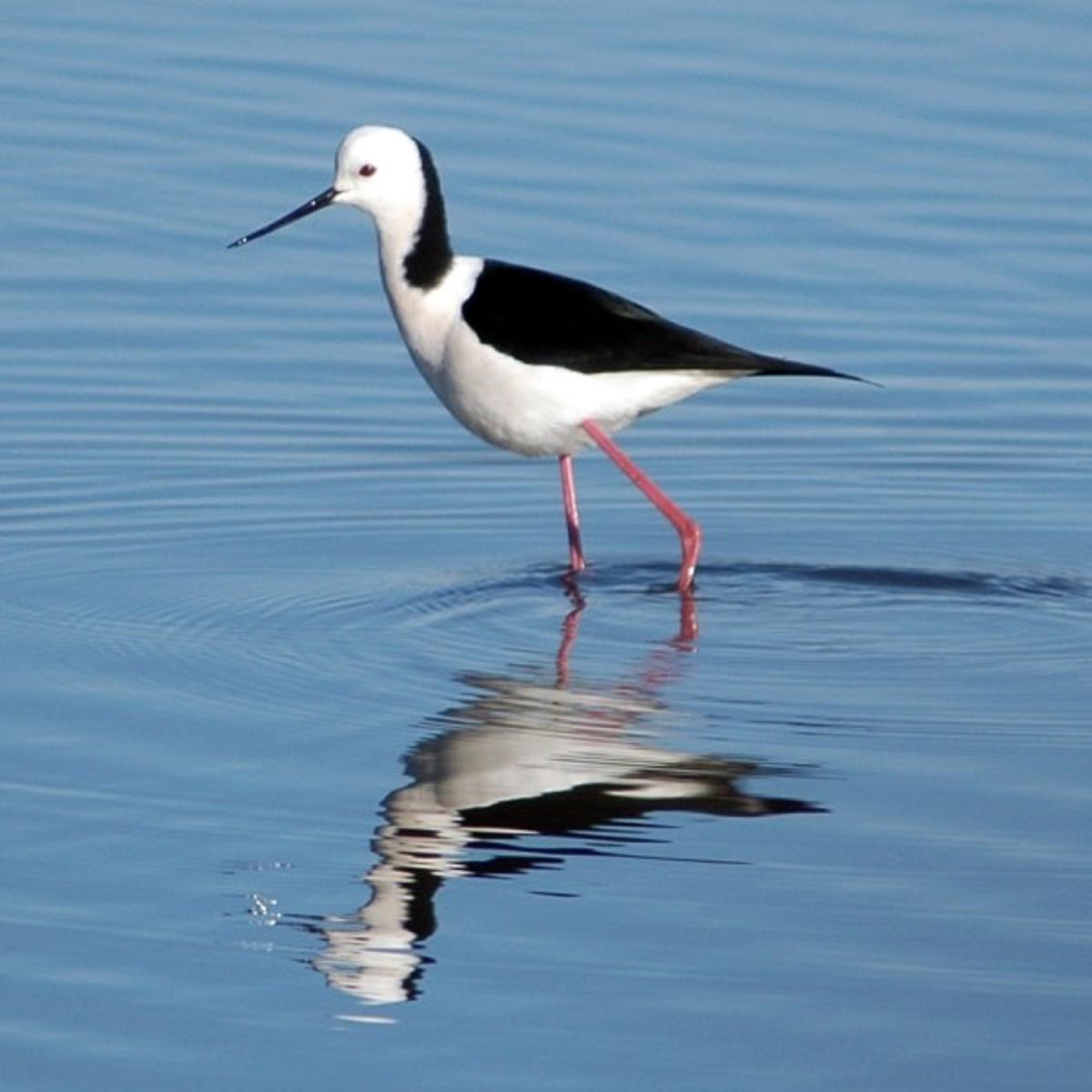Name
Himantopus himantopus
Black-winged stilt
Framing
Phylum: Chordata
Subphylum: Vertebrata
Class: Aves
Order: Charadriiformes
Family: Recurvirostridae
Genus: Himantopus
Species: himantopus
Habitat
Marshes and shallow lagoons. It frequently occurs in places associated with humans, such as irrigated areas, rice fields, salt marshes, fish farms or wastewater treatment plants, as it needs water with a fairly high biological productivity, in accordance with its habitat preferences.
Feeding
Predator of aquatic invertebrates, especially aquatic insects, which it captures when they are perched by rapid pecks on the surface of the water, on or under vegetation, and also in flight by vertical leaps.
Distribution
Temperate and tropical zones of all continents. Regions between 30° north latitude and 40° south latitude.
Conservation status
Not threatened. It is included in the category "Of special interest" in the National Catalogue of Threatened Species.
Additional information
Free. Gregarious. Wader with very long red legs, long straight fine bill and long neck, which gives it a very slender figure. Very contrasting black and white plumage. Length from bill to tail 35-40 cm, although the size of the legs makes it appear larger. In flight, the stilt is also unmistakable, as the way it stretches its legs and neck gives it a strangely elongated appearance.
Additional information
Bibliography
- Arroyo, G. M. (2000). Influencia de las transformaciones humanas de hábitats costeros supralitorales sobre la ecología de la reproducción de la cigüeñuela Himantopus himantopus y la avoceta Recurvirostra avosetta (Aves: Recurvirostridae) en la Bahía de Cádiz: aplicación a la gestión de espacios naturales protegidos. Tesis doctoral, Universidad de Cádiz, Puerto Real, Cádiz.
- BirdLife International (2011). Himantopus himantopus. En: IUCN Red List of Threatened Species. Version 2011.2.
- Castro Nogueira, H. (1993). Las salinas de Cabo de Gata. Ecología y dinámica anual de las poblaciones de aves en las salinas de Cabo de Gata (Almería). Instituto de Estudios Almerienses, Almería.
- Cramp, S., Simmons, K. E. L. (Eds.). (1983). Handbook of the Birds of Europe the Middle East and North Africa. The Birds of the Western Palearctic. Volume III. Waders to Gulls. Oxford University Press, Oxford.
- Cuervo, J. J. (1993). Biología reproductiva de la avoceta (Recurvirostra avosetta) y la cigüeñuela (Himantopus himantopus) (Recurvirostridae, Aves) en el sur de España. Tesis doctoral. Universidad Complutense de Madrid, Madrid.
- Cuervo, J. J. (2003). Parental roles and mating system in the black-winged stilt. Canadian Journal of Zoology, 81 (6), 947-953.
- Cuervo, J. J. (2004). Nest-site selection and characteristics in a mixed-species colony of Avocets Recurvirostra avosetta and black-winged stilts Himantopus himantopus, Bird Study, 51, 20-24.
- Cuervo, J. J. (2005). Hatching success in Avocet Recurvirostraavosetta and Black-winged Stilt Himantopushimantopus, Bird Study, 52, 166-172.
- Goriup, P. D. (1982). Behaviour of black-winged stilts. British Birds, 75, 12-24.
- Madroño, A., González, C. & Atienza, J. C. (Eds.) (2005). Libro rojo de las aves de España. Primera reimpresión. Dirección General para la Biodiversidad-SEO/BirdLife, Madrid.
- Rufino, R & Neves, R. (1995). Black-winged stilt Himantopus himantopus wintering population: recent changes in range and numbers. Wader Study Group Bulletin, 76, 40-42.



